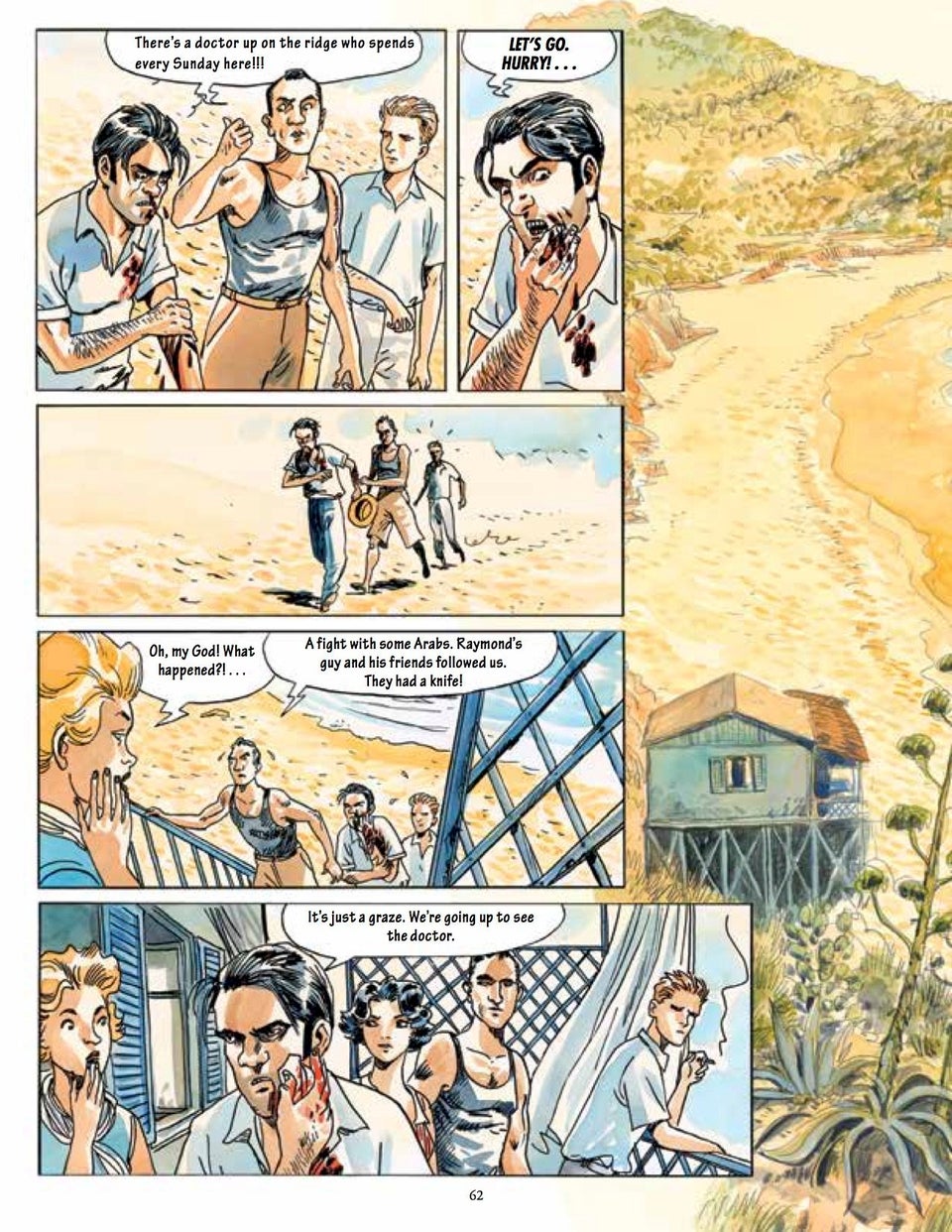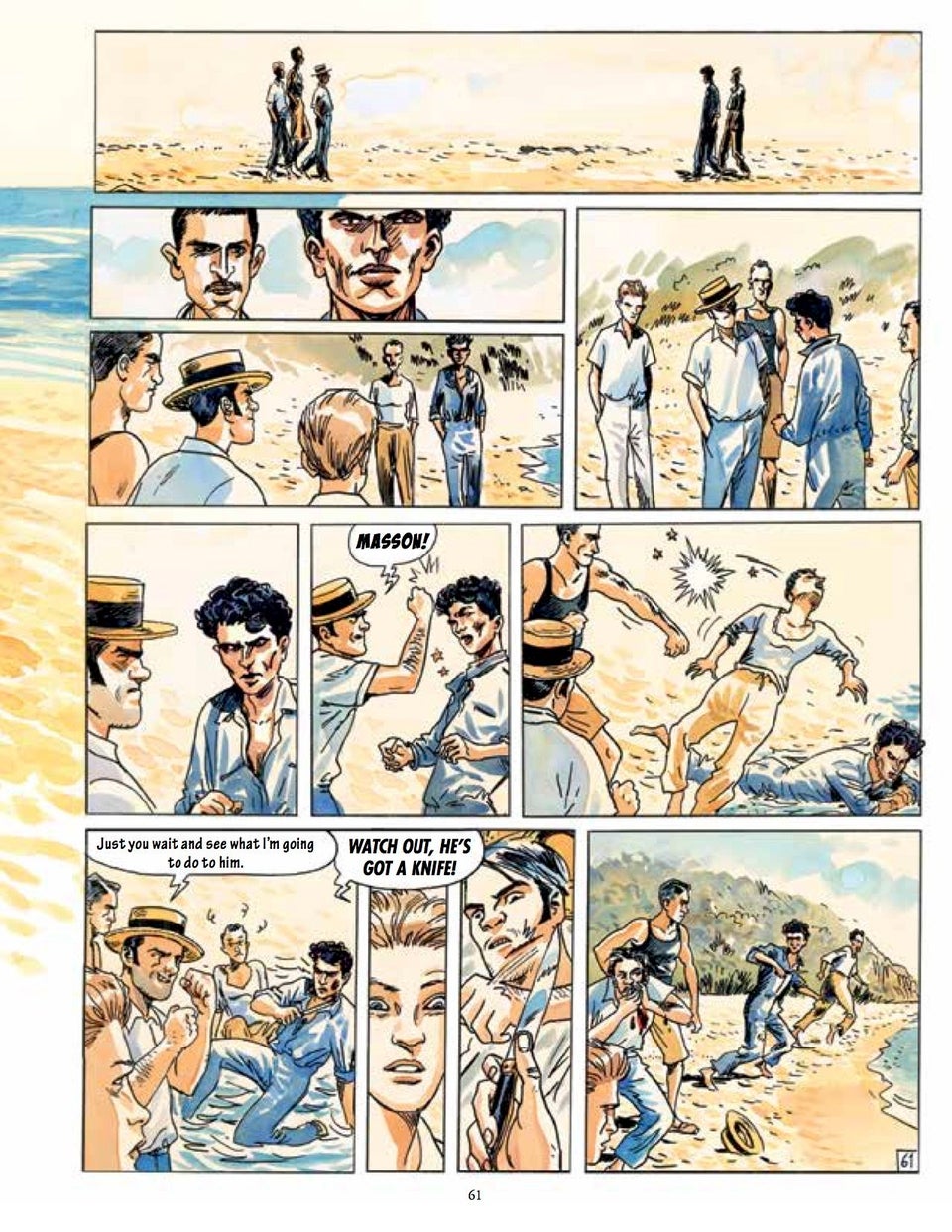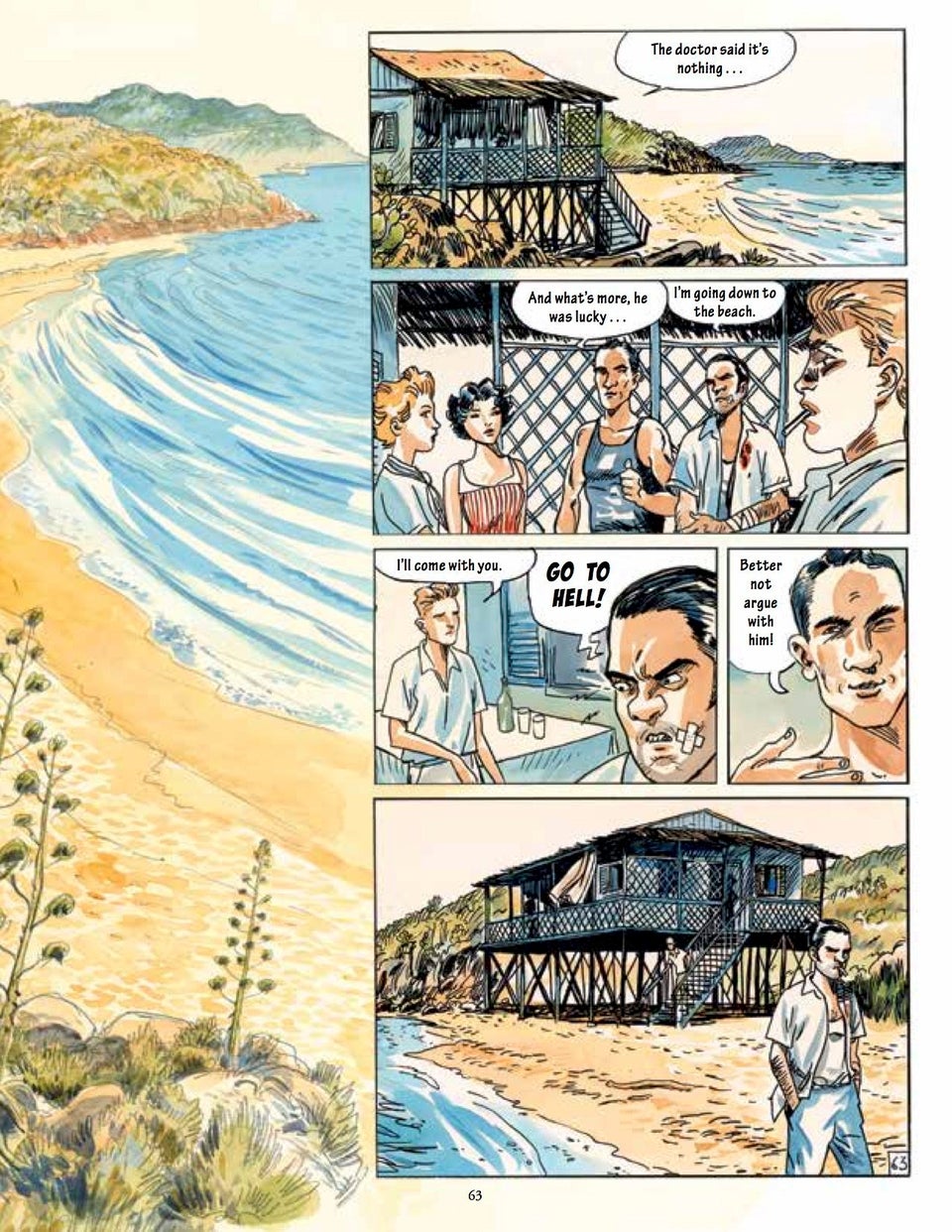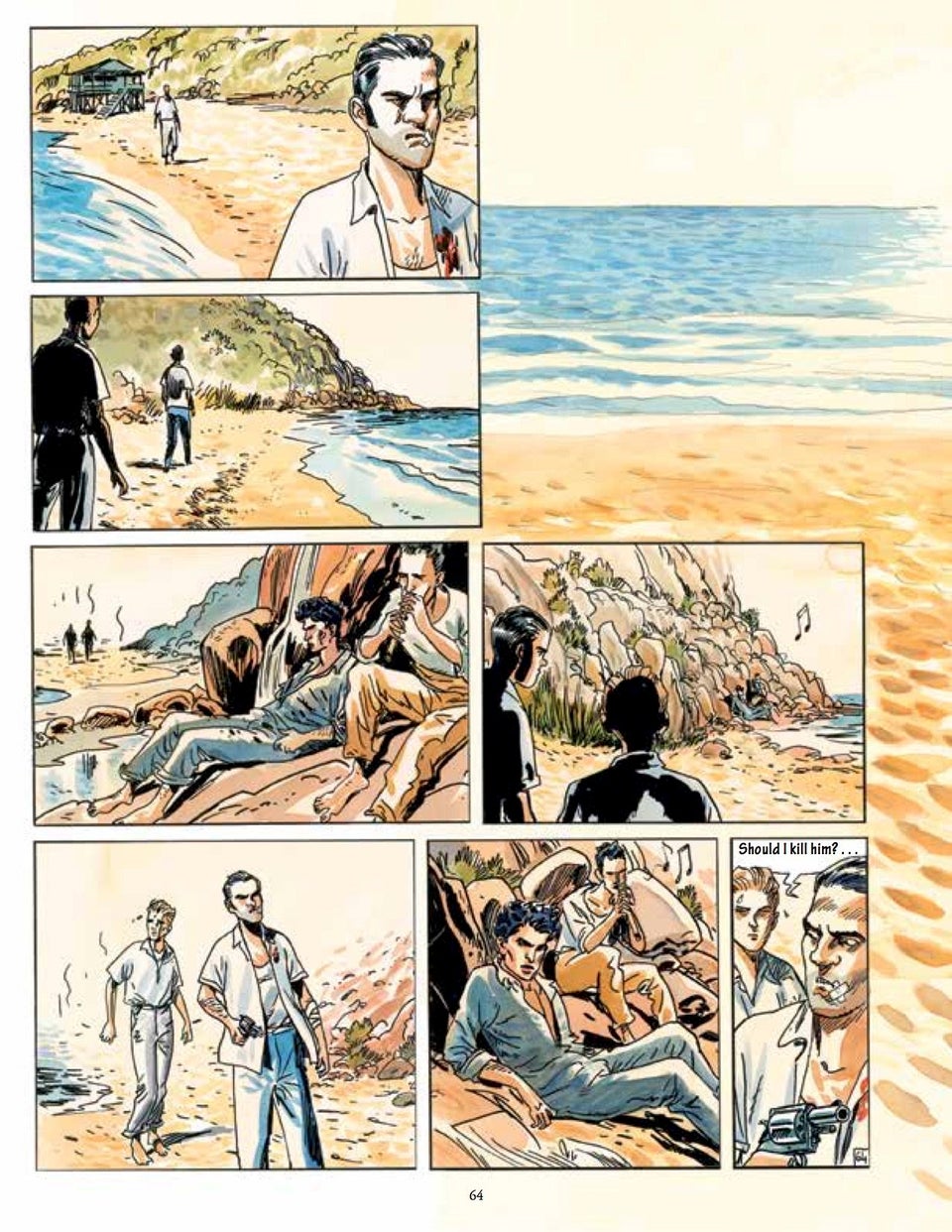You know the story. Maybe you read it for high school English class, and misguidedly used it as the basis for your devil-may-care attitude. Maybe you read it on your own time, reconciling its dark themes with the bubbly twee-filled glee of “Amélie.” Regardless, it’s a story that firmly implanted in the required reading canon ― one that soon-to-be English majors cite in papers across the Western world.
To bring the sweltering mood of The Stranger to life, and to further explore his own Algerian roots, graphic novelist Jacques Ferrandez adapted Albert Camus’ classic into an illustrated work. We spoke with the writer and artist about Meursault’s chilling character. “While drawing Meursault, I thought of James Dean, who became famous among the young people of his time,” Ferrandez said.
More of his thoughts ― and complete excerpts from his book ― are below.
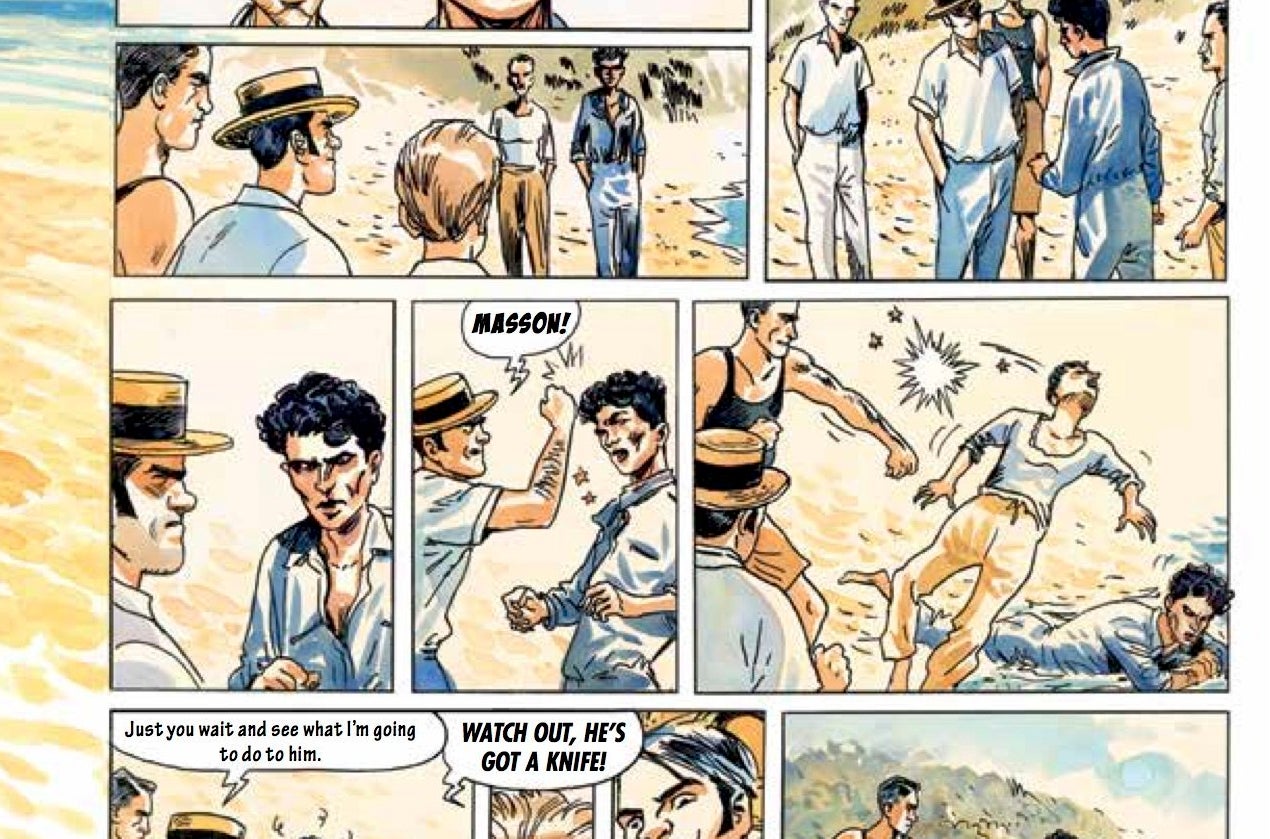
You have a familial connection to Camus ― you said in another interview that your grandparents knew his mother. How did this influence your vision of the story?
As a matter of fact, my father’s family came over from Spain, from the same region as Albert Camus’ mother’s family. They ended up in Belcourt, the same district of Algiers where my grandfather, a cobbler, had his shop. It was right in front of the house where Camus grew up as a child and a teenager, and where I was born in 1955.
My grandmother used to tell me that she knew Albert Camus’ mother, that she would meet her when she went to the market, that they would talk in the Spanish dialect that is spoken around Valencia. That is why I was very young when I heard about Albert Camus, the local kid who had become a celebrity in the world of literature and ideas, being awarded the Nobel prize in 1957.
Before this book, you created a graphic version of Camus’ The Guest, and illustrated Algerian history volumes. How does your approach to illustrating fiction differ from illustrating nonfiction?
There is not such a big difference, especially as all these stories take place in the same setting, that of colonial Algeria which I am familiar with, since I was born there and I have visited the country many times. The serial story I did on Algeria is largely fictitious, even though my historical background has to be very thorough and accurate. What matters most is to be driven by one’s plot and character.
When did you first read The Stranger?
I remember reading L’étranger when I was 17 as is customary in France. I even remember that at the time I felt I did not understand that story at all. Everything seemed so bizarre: Meursault’s behavior before and after the killing on the beach, the way he pleaded his cause so awkwardly at the trial, and finally the book’s last sentence when he wishes for the shouts of hatred of a numerous crowd witnessing his execution.
What, to you, is the most important message of the book?
It seems to me that L’étranger is a novel with universal appeal. It has touched many a generation the world over since it appeared in 1942. There is something enigmatic to that book. Even if you read it and re-read it at different periods in your life, you never get a full grasp of its mystery.
The book is about the human condition and also about youth. Camus used to describe Meursault as someone who does not know how to lie. Each new generation can identify with this character. While drawing Meursault, I thought of James Dean, who became famous among the young people of his time with the movie “A Rebel Without a Cause.” He stood for a spirit of rebellion against the Establishment and, generally speaking, against propriety and conventions.
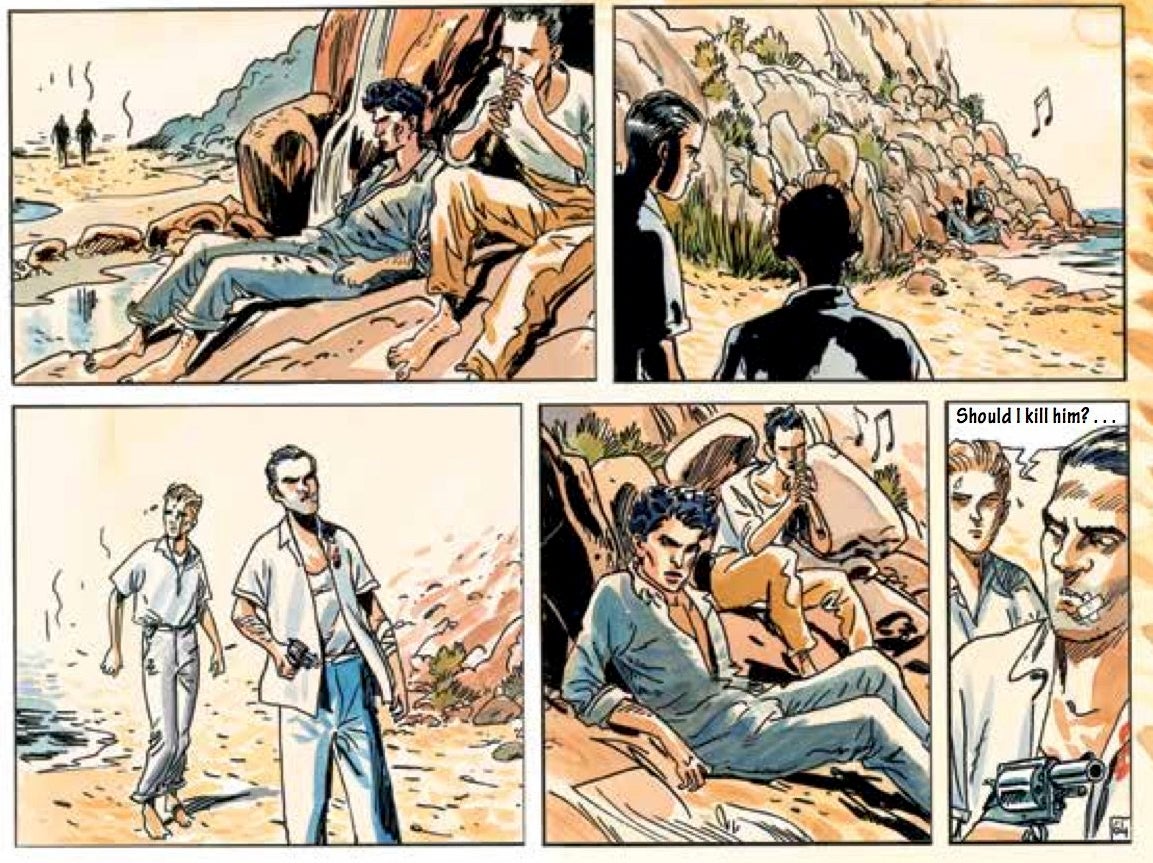
The Stranger is very atmospheric. How did you capture the surreal scenes, and the extreme heat, with your illustration style?
I do not know to what extent I have succeeded, but my intention was to make the reader feel what is happening in a very physical, sensory way.
The sea, the sun, the elements were extremely important for Camus. The whole story takes place in crushing heat. The outdoor scenes in broad daylight until breaking point and the murder on the beach. And then the indoor scenes with the judge, the lawyer, as well as the long sequence in court.
I don’t hesitate to resort to the set codes of comic strips such as droplets of sweat above the character’s head, for instance, for they enhance the meaning of the image.
The first line of The Stranger is a hotly debated one in French-English translation. Which meaning, or approach, did you wish to convey?
This is one of the most famous sentences in the whole of the world’s literature. One has to take it in the simplest possible way.
I don’t know how it is rendered in the many languages L’Etranger has been translated into. But the aloof, unconcerned attitude Meursault can be reproached with all along the story is denied by this first sentence that the narrator utters. “Today, mum has died” is more affectionate, more direct and natural, it conveys a sense of closeness between Meursault and his mother than “Mother died today,” for instance, would have failed to imply.
But this is a novel about the human condition, written by someone aged 25 or 26 who is aware that he is mortal (Camus was 17 when he learned that he had tuberculosis, and in those days his chances of recovery were slim.) Just as in a roman noir, death pervades the whole novel.
First, it is the death of his mother that Meursault is confronted with. Then the death he brings about later on, almost in spite of himself, on that beach. And eventually the death that befalls him as his punishment by the Justice of Men. While Camus was writing L’Etranger, he was also working on his philosophical essay The Myth of Sisyphus, which deals with the question of suicide in the face of the absurdity of life.
But let’s not forget that before L’Etranger, there was an unfinished novel from which L’Etranger borrows many passages, together with the name of the main character, Mersault, which is the same except for one letter. Its title is La Mort Heureuse (Happy Death), a notion that is to be found in the concluding sentence of The Myth of Sisyphus: “We must assume Sisyphus to be happy.”

